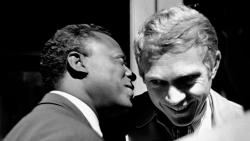by Sean O'Hagan
“Jim was a guy you either loved or hated, there was no in-between,” says Amelia Davis, Jim Marshall’s erstwhile assistant and now archivist. “If he loved you, he would lie down in front of a truck for you. If he hated you, he would happily drive the truck over you.”
Marshall, who died in 2010, is known as the father of modern music photography – Jimi Hendrix setting light to his guitar, a young Bob Dylan rolling a car tyre down a New York street, Johnny Cash “flipping the bird” on stage in San Quentin prison. While managers and minders may have bridled at his combative approach – he demanded total access before accepting an assignment – performers seemed to have sensed, in his upfront attitude and commitment to his craft, a kindred spirit. “They loved him. He was one of the guys,” says Davis. “But more importantly, they trusted him because he was so good.”
Marshall’s first love, though, was jazz, and a new book testifies to his more quietly intimate approach to photographing musical titans such as John Coltrane, Duke Ellington, Miles Davis and Nina Simone. Simply titled Jazz Festival, it is not just a collection of great, mostly unseen fly-on-the-wall portraits, but a document of what the veteran jazz writer Nat Hentoff, describes as “one of the most important periods in the cultural history of the United States”. From 1960 to 1966, Marshall photographed the performers and the audiences at the Monterey and Newport jazz and folk festivals, the precursors of the huge hippy gatherings of the late 60s – Woodstock, Isle of Wight, Glastonbury. His images attest to the surprisingly intimate and formal nature of these early events: everyone is dressed smartly in the preppie-meets-boho style of the time and the audience sits attentive in rows of seats as if attending a classical recital.
Read more at www.theguardian.com/artanddesign
